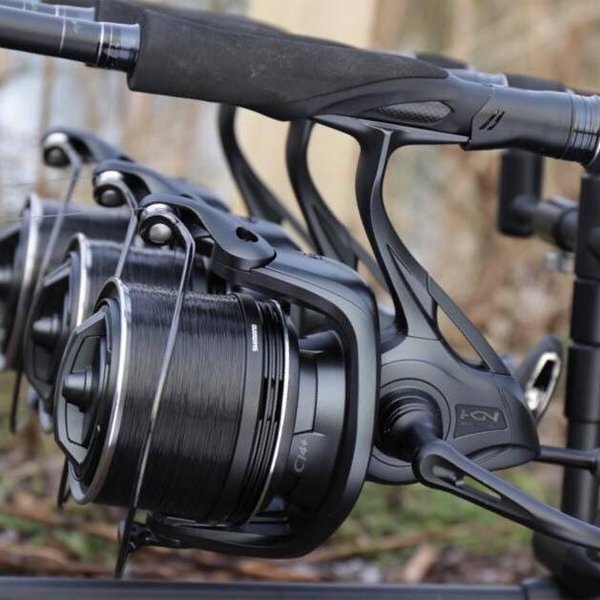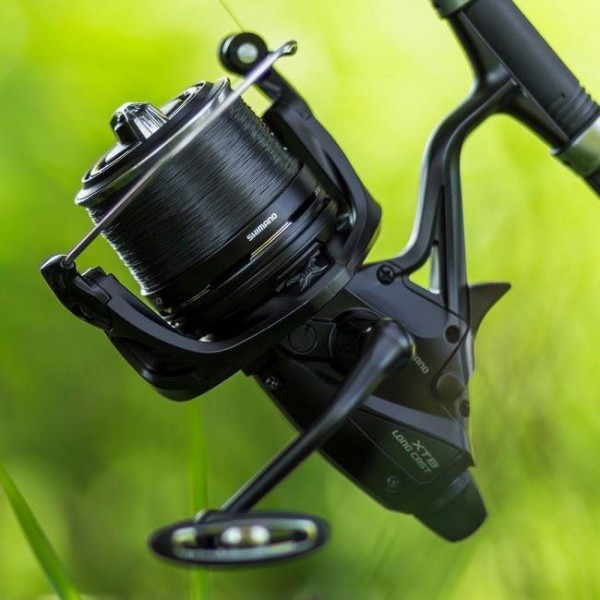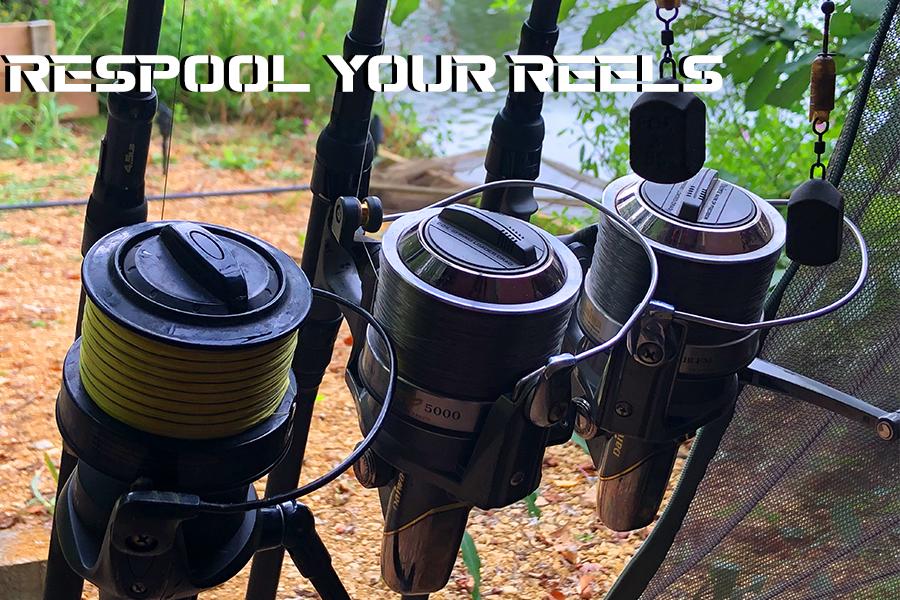Spooling Up Your Reels - Best Methods and how to get the Best Line Lay.
As many anglers know, spooling up reels can be a pain and as a result it is often a job which doesn't happen as much as it should. This article should make spooling your reels ten times easier than before.
Backing Line
The use of a backing line is a game changer for spooling your reels. It saves you money, time and even with 3 rods spooled you should have enough to spool an extra reel when you need it or if you have a snap off and lose a lot of line.
This is how I spool backing onto new reels. Firstly I will spool the reel full of backing line. Once I have done this I'll get my distance sticks and take off about 200 meters of backing (218.723 yards). Once I have done this I'll use a back to back grinner knot to secure my mainline to the backing. This knot has truly been tried and tested over time. I use it for shock leaders, snag leaders and have never had any problems with this knot. You won't have any problems with this knot for certain as if you're fishing 100 yards for an example, you will still have enough mainline to prevent the knot slipping.
After this fill up the reel with your mainline and you're good to go. Just give the reel a good cast before fishing and reel the lead back with the tip under water. This will ensure you get the best line lay on your reel and your line will be nice and tight on the spool. If you fish distances. It may be worth taking 300m of backing off or even more. Just ensure that you won't reach your backing line whilst playing a fish. I use 200m of mainline as it suits my angling as I rarely fish over 15 wraps.
You can use any line for backing, but the perfect backing line is anything thick in diameter. It can be a cheap line as this line will never come off your reel so you don't have to worry about your line lay from the backing in the water. Thick diameter is perfect as it means you use less backing line on the spool. The FOX Carp Mono in 20lb is perfect backing line. I then like to use the Gardner GT HD line in 15lb.
Which Line is Right for You
There are a lot of different lines on the market and some are really good at casting, whilst some line is brilliant for sinking like a brick. For instance, the Nash Bullet Mono is pretty much bullet proof. I've used it before at 15lb and it has an extremely thick diameter for the breaking strain. This gives it excellent properties for getting your line pinned to the bottom and makes it more resistant to snags and any obstructions on the bottom. However because of the thick diameter, I noticed that it did hinder my casting. This may just be my casting as I've not done a lot of distance fishing. I can fish comfortably and confidently at 80yards max so anglers who fish longer ranges may not find this as much of a problem.
The Gardner GT HD Line I am currently using and I find it's a perfect all rounder. I can cast it accurately and it also sinks really well making it perfectly suited for my fishing. The best thing you can do if you're unsure which line is right for your fishing is come in and we'll happily point you in the right direction. When there are a lot of different lines on the market, it is important you have the right line for your fishing.

Spooling Up With Braid
When spooling up with braid, I soak the braid in water for at least 12 hours, usually 24 hours. This ensures that the braid is going on to the reel as tight as possible and you are less likely to get wind knots when spooling up. As anglers know, braid has a tendency to cause wind knots when it is not being spooled up properly. Keeping the braid wet at all times reduces this massively.
When using braid, it can be a good idea to use a backing line as this will save you money and time and you can spool up your reels as efficiently as possible.
Tips for Spooling up
So there are a couple of things you can do to ensure you get the best line lay on your reels. Firstly if your line is coming on at an angle then use washers. If there is less line at the top of the spool than the bottom then I've found removing a washer helps get a nice even line lay. If there is more line at the front of the spool than the back, then simply add a washer or two and this should help your line lay.
Every often check for line twists whilst spooling up. If your line is twisted then twist the spool of the mainline so you remove the twist. Line twist is horrible and if your mainline is full of twists then your line lay is not going to be good, it will hinder your casting and you're likely to get thrap ups / crack-offs when casting.
Place leads on the spool of the mainline to ensure that the spool does not twist whilst spooling up. I usually use 3-4 4oz leads and I find that this does the job perfectly!
Use a wet towel or washing up sponge and hold the line up to the rod whilst spooling up. This will ensure that your line spools nice and tight onto your reel and you will get a killer line lay! This also makes it easier to spot line twists etc.

